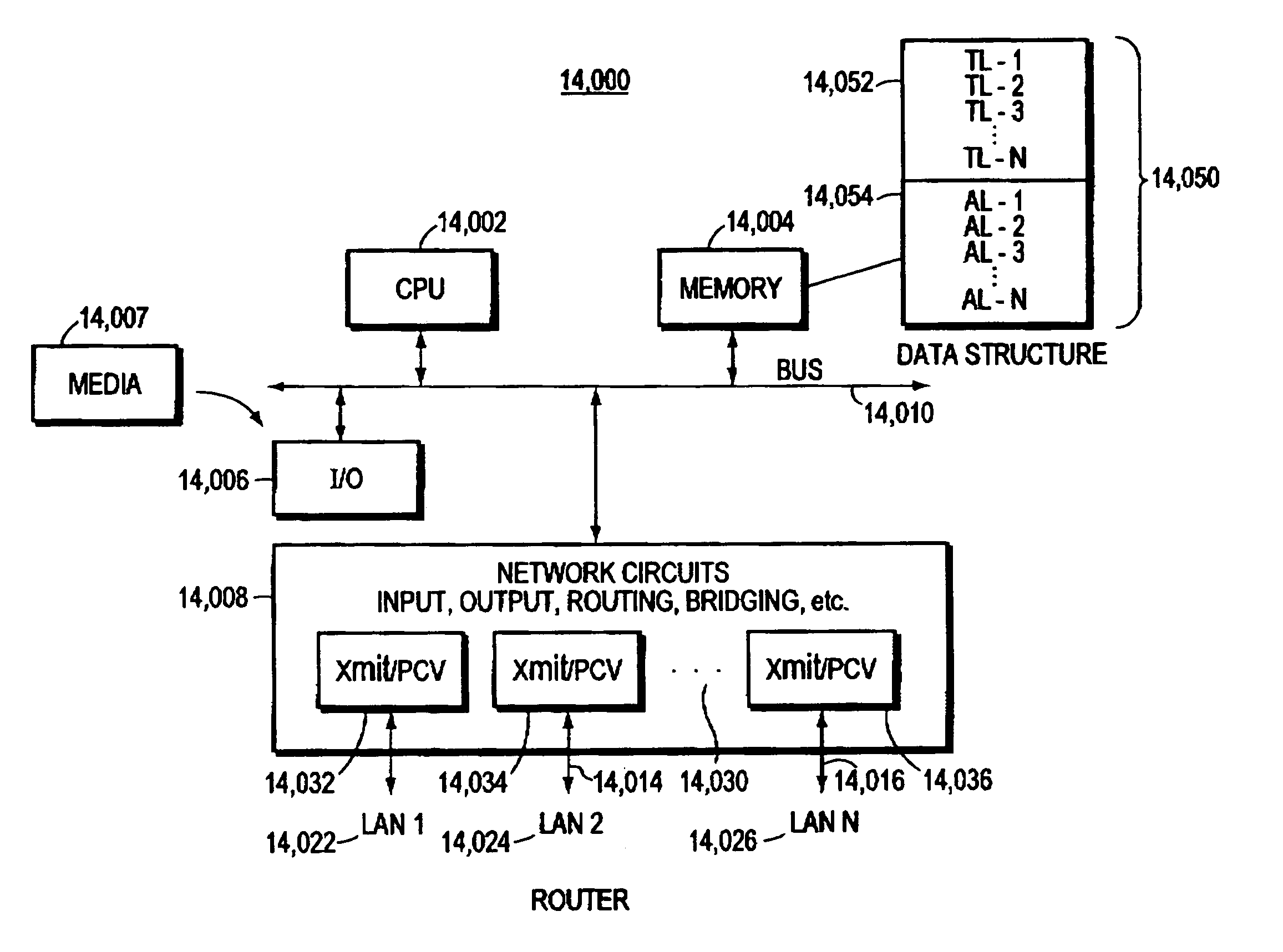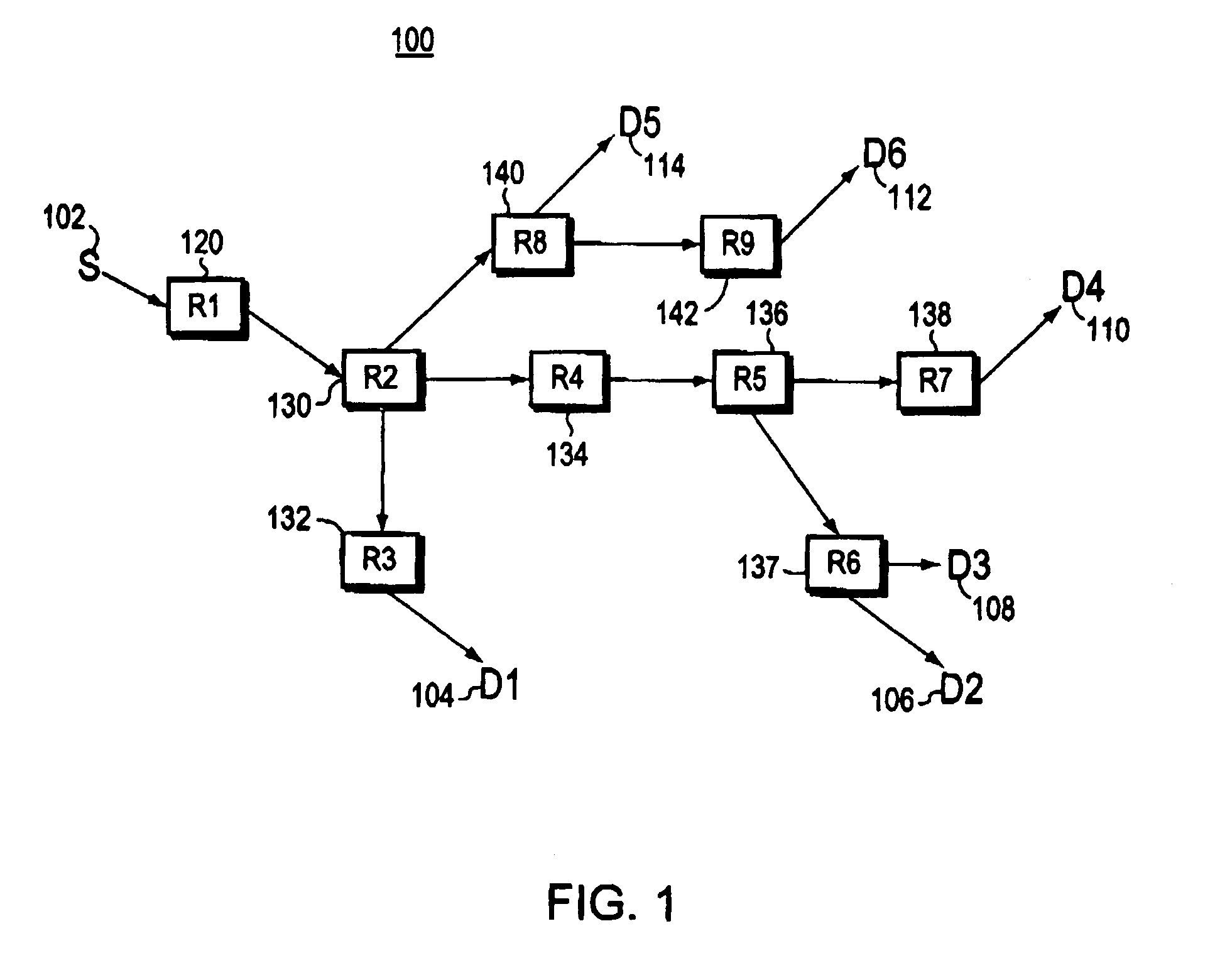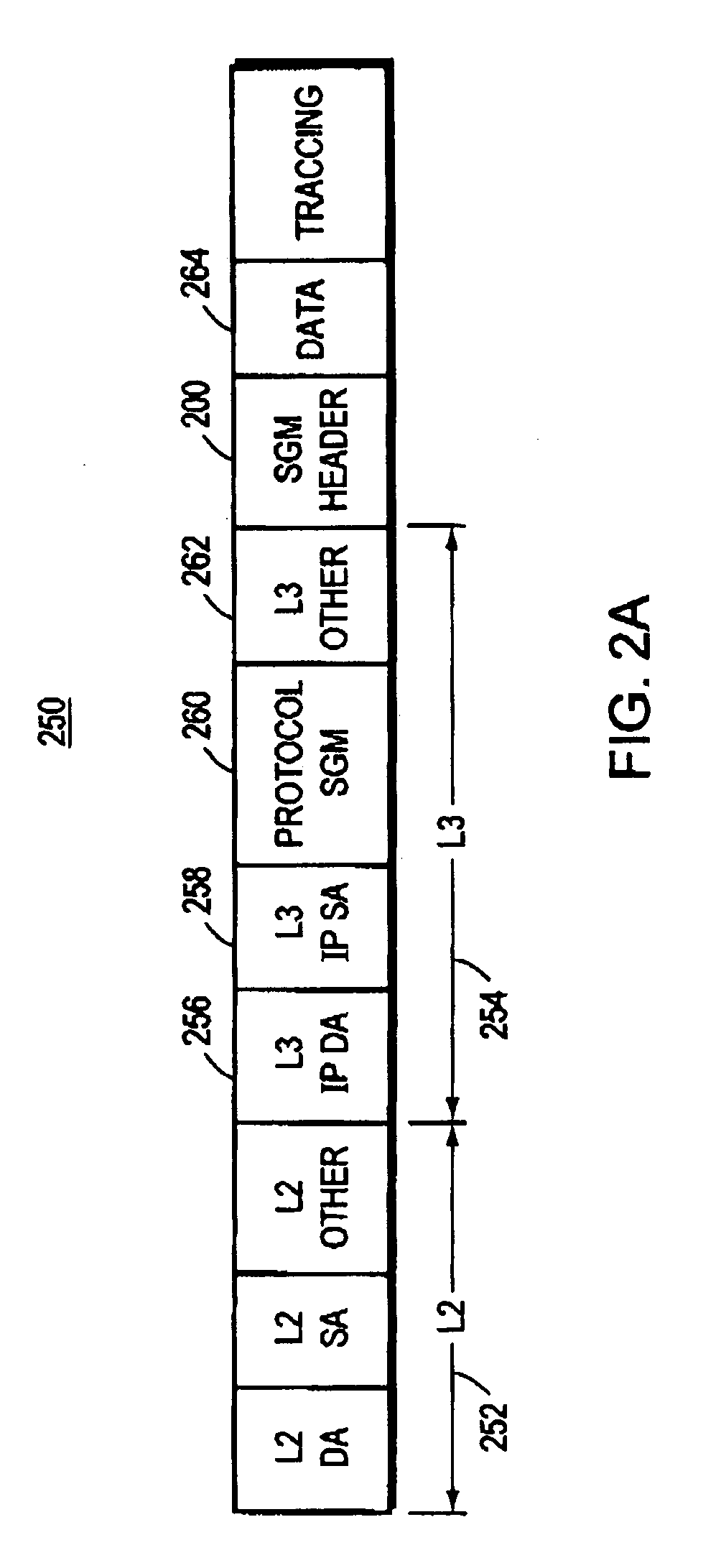Small group multicast in a computer network
a computer network and small group technology, applied in the field of packet multicasting, can solve the problems of wasting network bandwidth for the router, affecting the performance of the network, and the amount of state information which the router must store becomes too large to be easily managed, so as to relieve the router
- Summary
- Abstract
- Description
- Claims
- Application Information
AI Technical Summary
Benefits of technology
Problems solved by technology
Method used
Image
Examples
Embodiment Construction
[0029]Turning now to FIG. 1, computer network 100 is shown. Source station S 102 transmits data packets to destination stations D1104, D2106, D3108, D4110, D5114, and D6112 by means of a multicast session. Destination stations D1 . . . D6 are the multicast group of destination station. Router R1120 is the ingress (or encapsulation) router, and routers R3132, R6137, R7138, R8140 and R9142 are the egress (or destination) routers. The delivery tree to reach all the destinations (D1 to D6) is indicated by the arrows. When R1120 receives a packet from source S 102 addressed to the multicast group from source station S, it encapsulates the multicast packet in a unicast packet addressed to the first hop router R2 and includes in the packet a header which describes the required delivery tree. Note that the delivery tree need only include the routers that are either branch points (R2, R5, R8) in the tree, or delivery points (R3, R6, R7, R9). An intervening router, such as router R4 above, ne...
PUM
 Login to View More
Login to View More Abstract
Description
Claims
Application Information
 Login to View More
Login to View More - R&D
- Intellectual Property
- Life Sciences
- Materials
- Tech Scout
- Unparalleled Data Quality
- Higher Quality Content
- 60% Fewer Hallucinations
Browse by: Latest US Patents, China's latest patents, Technical Efficacy Thesaurus, Application Domain, Technology Topic, Popular Technical Reports.
© 2025 PatSnap. All rights reserved.Legal|Privacy policy|Modern Slavery Act Transparency Statement|Sitemap|About US| Contact US: help@patsnap.com



